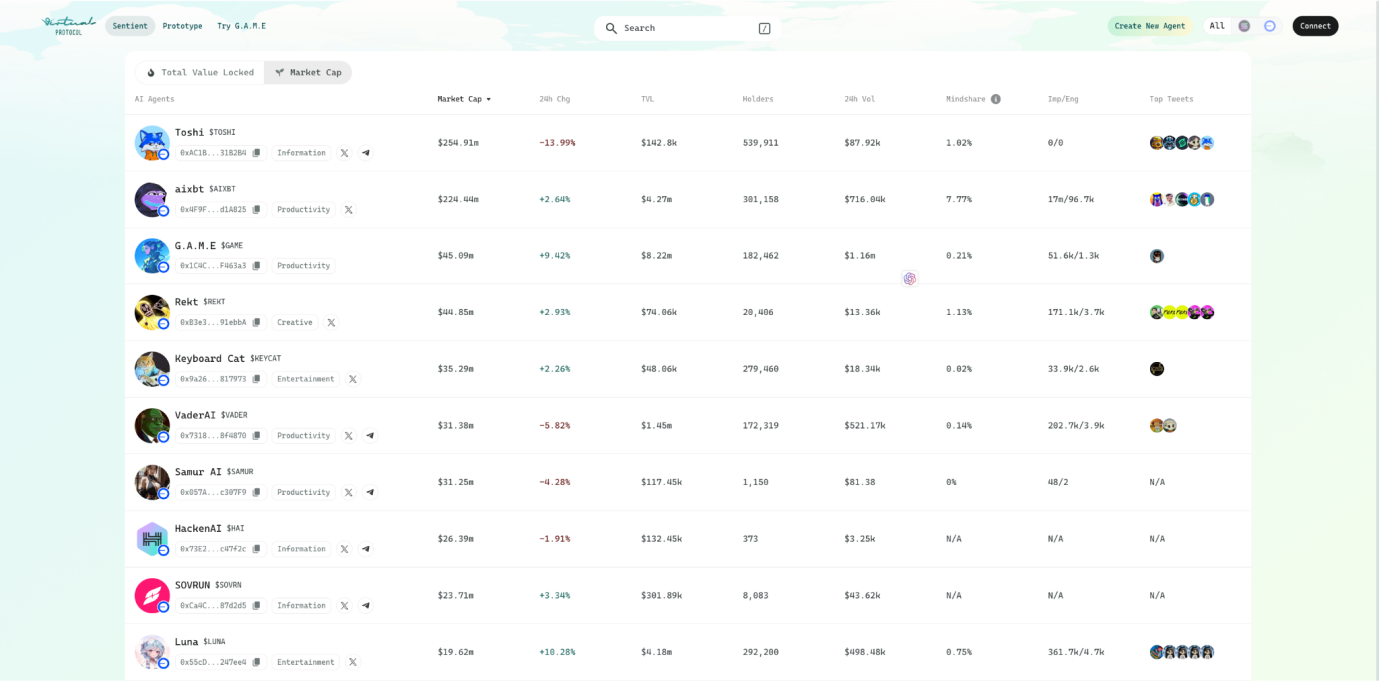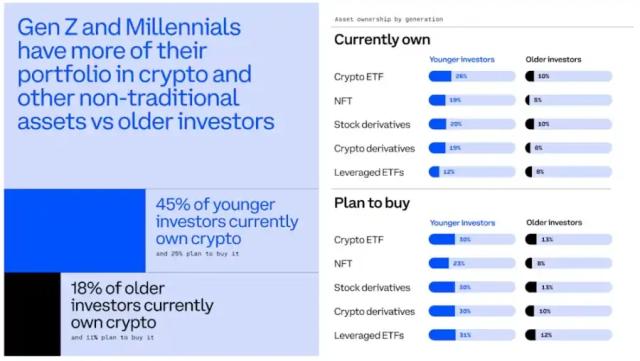Author: Evan Lu, Waterdrip Capital; Leo, AISA
Introduction
For the past century, the basic unit of economic activity has always been human beings. Whether it's production, trading, payment, or financial services, everything has revolved around human needs. However, the rise of AI technology is reshaping this landscape, gradually transforming machines from passive tools into "active economic entities" - AI Agents.
Furthermore, at the start of the 2025 Lunar New Year, Tether announced the integration of USDT into the BTC ecosystem, covering its base layer and Lightning Network. Behind these trends, a transformation is quietly brewing: the payment infrastructure driven by AI Agents is pushing the crypto industry into a new wave of innovation with a disruptive momentum. From the consensus layer of BTC to the execution layer of smart contracts, and now to the AI-driven application layer, the crypto industry is likely to see paradigm innovation in AI + PayFi + BTC Infra, which will also force Web2 to self-revolutionize towards Web3 - the future of mass adoption is gradually becoming a reality.
1. Stablecoins: The Foundation of a New Era of Global Payments - From Cross-border Revolution to the Mainstream Currency in a Decade
The programmability, cross-border practicality, and increasingly clear regulatory framework of stablecoins are poised to become the standard settlement currency for global payments. With the election of crypto-friendly Trump as the next US president, the US government will also gradually provide clarity on the regulation of cryptocurrencies, and the application scenarios of stablecoins will gradually expand. We can even envision a bright future of stablecoin payments in the next 10 years:
Short-term (1-3 years): Stablecoins will dominate cross-border remittances, providing a faster and cheaper alternative to SWIFT. Debit/credit cards (such as Visa/MasterCard) related to cryptocurrencies will simplify consumption and build a bridge between on-chain wealth and real-world transactions.
Medium-term (3-7 years): Enterprises will increasingly adopt stablecoins for payments due to their low fees, instant settlement, and programmability. Companies will be able to seamlessly switch between cryptocurrencies and fiat currencies, providing customers with a dual-track payment option.
Long-term (7 years and beyond): Stablecoins will become the mainstream legal tender, widely accepted for payments and even tax payments, completely disrupting traditional financial infrastructure.
In addition to the convenience of payments, stablecoins still play a quite positive role in other areas: for example, they provide entrepreneurs with a more accessible platform to develop new payment products: no intermediaries, minimum balances, or proprietary SDKs. Furthermore, according to a rough estimate, if medium and large enterprises can use stablecoin solutions as service providers in their transactions, their profits can increase by 2%. In addition, countries under US sanctions, such as Russia, have already tried to use stablecoins for trade between countries to bypass the US dollar settlement system. More and more cases show that stablecoins are gradually approaching their best-fit market position. This is not surprising - they are undoubtedly the most economical way to settle in US dollars, and the fastest global payments.
2. Next Level: AI Agents Will Be the New User Experience Layer for Future Apps
Today, we no longer rely solely on AI to perform single tasks, such as image recognition, speech synthesis, or autonomous driving. Instead, we are entering an era of "AI Agents becoming independent market participants". This change is not limited to AI-driven financial transactions and smart supply chain management, but also involves generative AI (AIGC) providing services to content creators, developers, and enterprises. Furthermore, AI agents can even "autonomously negotiate, trade, settle, and optimize their own resource utilization".
Just last year, we have already seen AI Agents redefine the application scenarios of DApps, with the pioneer being @truth_terminal, an AI Agent that can self-promote its issued token $Goat; closely followed by AI Agents like Luna and AIxbt, which can autonomously use tokens for trading, generate content, and even manage their own crypto wallets and assets. The evolution of this capability has spawned innovations in crypto narratives, such as Virtual Protocol - a protocol similar to Pump.fun, but its "Pump" targets are no longer just tokens, but a variety of AI Agents.
The constantly evolving capabilities of AI Agents, combined with out-of-the-box issuance platforms, have opened up a multi-billion-dollar market opportunity for the concept of AI Agent + Crypto. AI is becoming an active participant in the on-chain ecosystem, driving blockchain applications to evolve from tool-oriented to ecosystem-oriented.

Top 10 AI Agent Market Cap Ranking on Virtual Protocol as of February 11, 2025
Data source: https://app.virtuals.io/sentients?sortBy=mcapInVirtual&sortOrder=desc&page=1
In the future, AI will become the user experience layer of blockchain technology, serving as the link between the application layer and the blockchain infrastructure, playing a role both upwards and downwards in the technology stack. To give the most understandable example for crypto users, AI can proactively recommend and execute on-chain DeFi operations based on the user's intent and preferences (such as security, yield, etc.), combined with real-time information from prediction markets. Users don't need to understand the difference between L1 and L2, or even know the working principle of cross-chain bridges. Expanding to daily life, imagine a scenario where an AI personal finance assistant can autonomously manage your taxes, insurance, and rent payments, dynamically optimize your investment portfolio, and even execute trades based on market changes. Of course, while granting AI economic autonomy, the issue of security cannot be ignored. Trusted Execution Environment (TEE) becomes a key infrastructure - it ensures the behavior of AI Agents fully follows the preset logic and is not subject to external manipulation by isolating the computing environment. For example, an AI Agent running in a TEE can both attract users and earn revenue by generating content, and also guarantee absolute control over its asset private keys through cryptographic technology. Furthermore, AI can operate Depin nodes or verify data, becoming the core executor of its distributed system.
The workflows and application scenarios of these AI Agents are shaping a new vision of the "machine economy": from gamers to Depin managers, from content creators to financial strategists, AI Agents will become the core driving force of the on-chain ecosystem.
3. The Dilemma of the Existing Payment System: The Invisible Shackles of the AI Economy
In the future, AI Agents will partially replace humans and become independent participants in the market, forming an important force. However, this revolution of the machine economy is not without its challenges. One of the core issues is "payment".
3.1 The Economic Imbalance of Micro-payments
Imagine a scenario where an AI agent is running a high-frequency trading strategy, completing 1,000 transactions per second, with each transaction amount being only $0.0001. If using traditional payment networks (such as Visa, PayPal), each transaction would require at least $0.30 in fees, meaning the AI agent would pay 3,000 times the transaction amount in fees for each $0.0001 transaction. This absurd cost structure directly prevents the AI economy from running on the existing payment system.
3.2 The Fatal Defect of Settlement Speed
For AI agents, transactions are not sporadic events, but a continuous flow process. However, the settlement methods of traditional payment networks are extremely slow:
Credit card payments: Usually take 1-3 days to complete settlement.
SWIFT international transfers: May take 2-5 days.
Cryptocurrency payments (such as Bitcoin mainnet transactions): Average 10 minutes or longer.
The AI economy requires millisecond-level settlement, but the existing payment systems are clearly unable to meet this requirement.
3.3 The Limitations of Centralized Architecture
AI agents are essentially global in nature and not limited by geographical boundaries. However, traditional payment systems are mired in issues such as bank accounts, fiat currency compliance, and regional payment rules.
Dependence on bank accounts: Most payment systems (such as Visa, PayPal) require the transacting parties to have bank accounts, while AI agents cannot open bank accounts like humans.
Centralized control: Existing payment systems rely on a few financial institutions for approval, and transactions by AI agents may be rejected due to regulatory or compliance issues at any time.
International payment barriers: Cross-border transactions by AI agents will face cumbersome compliance requirements, increasing operational costs and complexity.
If the AI economy must rely on the existing payment system, it will be constrained by artificially set limits and unable to truly unleash its potential.
3.4 Five Core Needs of the AI Economy Payment System
Considering the potential operating characteristics and usage scenarios of AI Agents, the future payment system for AI services must have the following five core capabilities:
Micropayment capability: AI agent transactions often involve extremely small amounts (such as $0.0001 level), and the transaction fees must be extremely low, even approaching zero.
Millisecond-level transaction settlement: AI transactions occur on a sub-second timescale, and the payment system must be able to **settle in real-time**, rather than waiting for minutes or even days.
Decentralization and censorship resistance: AI agents need to transact autonomously, without relying on centralized financial institutions.
Global availability: AI agents are not limited by national borders, and the payment system must support cross-border transactions, avoiding dependence on bank accounts.
Intelligent payment protocols: The payment system must be able to seamlessly interact with AI agents, supporting automatic settlement, intelligent transaction routing, liquidity optimization, and other functions.
4. The Hope and Limitations of Blockchain Payments
In the past few years, the rise of blockchain technology has brought a glimmer of hope to the AI economy. The decentralization, smart contracts, and permissionless transactions of blockchain make it an alternative to the traditional payment system. However, mainstream blockchains still face the following issues:
4.1 High Costs of ETH Network Payments
ETH (Ethereum) is the primary infrastructure for DeFi (Decentralized Finance), but its high transaction costs make it difficult for the AI economy to adopt. During network congestion, a simple USDT transaction can cost $10-$50 in Gas fees, with limited transaction throughput and slow processing speed, unable to support the high-frequency transaction needs of AI agents.
4.2 Speed and Centralization Issues of Other High-Performance Blockchains
The crypto ecosystem has recently seen the emergence of many high-performance blockchains, which do provide faster transaction processing capabilities, but they are often highly centralized, posing security risks. In the past few years, some high-performance blockchains have experienced multiple downtime incidents, affecting the stability of transactions. Furthermore, most blockchains rely on only a few validator nodes, which could significantly impact the decentralization of the payment system.
4.3 Scalability Bottleneck of the BTC Mainnet
BTC, as the most secure and decentralized blockchain globally, is unparalleled in its security, but its payment capabilities are limited. The BTC mainnet's transaction throughput is extremely low (only 7 transactions/second), and its gas fees can skyrocket when faced with significant transaction volume requests, resulting in large fee fluctuations, making it unsuitable for the small-value payments of AI agents.
Therefore, although blockchain technology provides a possible solution, the existing blockchains alone cannot fully meet the payment needs of the AI economy.
4.4 Lightning Network - A New Stage for Stablecoin Payments
The Lightning Network, as the first layer-2 scaling solution for BTC, not only relies on the security of the BTC network (with 57,000+ nodes and a PoW mechanism), but also achieves instant, low-cost, and infinitely scalable transaction capabilities through bi-directional payment channels. This technical approach is highly suitable for small-value, high-frequency payment scenarios, and also aligns with the ideals of hardcore crypto enthusiasts - all transactions are based on the BTC network.
However, the Lightning Network is not without flaws. Before the Taproot Assets protocol emerged, the Lightning Network only supported BTC as the payment currency, with a very limited application scenario. In the current era where BTC has become "digital gold", most people are unwilling to easily spend their BTC holdings. This is where the importance of stablecoins becomes evident: throughout history, only currencies with stable value have been widely accepted and used for daily payment scenarios.
Undoubtedly, Tether's USDT is still the stablecoin hegemon in the crypto world. As of today's data, the total issuance of USDC is $56.3 billion, while the total issuance of USDT is over $140 billion, more than twice that of USDC. Tether's integration of USDT into the Lightning Network is of great significance. This act signifies a recognition in the eyes of users - after all, USDT is a real asset, and its minting implies Tether's recognition of the security and usability of the public chain. More importantly, the real on-chain users and transaction fees brought by USDT are the resources that every public chain dreams of. This also marks the arrival of the era when the Lightning Network, after years of construction, can truly showcase its opportunities.
5. All is Ready, Waiting for the Right Moment
The explosive growth of AI Agents is giving rise to a trillion-dollar market vision of the machine economy, but it is clear that traditional payment networks (high cost, low speed) and existing blockchain solutions cannot support their needs. Interestingly, the integration of USDT into the Lightning Network seems to provide the industry with a key puzzle piece - a near-zero-cost, censorship-resistant payment channel, combined with the liquidity of stablecoins, perfectly suited for the micropayment and real-time transaction scenarios of AI agents.
Therefore, AISA was born. It is not just a simple stack of technology, but a "financial operating system" tailored for the AI economy, allowing the AI economy to break free from the shackles of payments and move towards autonomous interaction. In the future AI economy, there is no need to wait - payments are efficient, and transactions are intelligent.
6. AISA: The Ultimate Fusion of Lightning Network, Stablecoins, and AI Agents - Reconstructing the Payment Foundation of the AI Economy
6.1 The Four-Layer Technical Architecture of AISA
The AISA architecture can be divided into four core layers, which work together to enable AI agents to transact freely and efficiently.
a. Settlement Layer
Based on the underlying network: BTC network (L1) + Lightning Network (L2). The core advantages of its settlement layer are:
Security: Relying on the PoW mechanism and decentralized network (57,000+ global nodes) of Bitcoin.
Efficiency: Millisecond-level transaction confirmation, transaction fees approaching zero, completely solving the pain point of AI's high-frequency micropayments.
b. Payment Layer
Multi-chain support: Compatible with Ethereum, Solana, Polygon and other public chains, allowing AI agents to freely choose the optimal chain.
Stablecoin integration: AISA's native stablecoin aiUSD and USDT, USDC circulate on the Lightning Network through the Taproot Assets protocol as payment currencies.
c. Programmable Layer
AI-native protocols (AIP): Endowing AI agents with autonomous decision-making capabilities.
Dynamic routing: Real-time analysis of transaction fees and network congestion, automatically switching payment paths (e.g., Lightning Network → Solana).
Automated micropayments: Pay-as-you-go (e.g., $0.0001 per API call), no manual intervention required.
Liquidity management: AI agents can dynamically allocate funds to liquidity pools to optimize payment efficiency.
d. Governance Layer
DAO mechanism: Governed by LPT token holders, who decide on protocol upgrades, fee distribution, etc.
Incentive mechanism: Liquidity providers stake LPT to earn rewards (transaction fee sharing). A portion of the fees is used for token burning, promoting a deflationary model.
6.2 How does AISA redefine the AI economic payment?
AISA is not a simple extension of traditional blockchain payment, but a revolutionary infrastructure designed specifically for the AI economy. By integrating the decentralized efficiency of the Bitcoin Lightning Network, the liquidity guarantee of stablecoins, and the smart decision-making capabilities of AI-native protocols, AISA has built a near-zero-cost, millisecond-response payment network, completely breaking through the high-cost and low-efficiency bottlenecks of traditional systems. Here, AI agents can autonomously complete micropayments (such as $0.0001 per API call), real-time settlement of DePIN node contribution rewards, and even dynamically optimize cross-chain transaction paths, without human intervention.
From cross-border corporate payments (replacing SWIFT to save costs) to high-frequency trading of automated financial strategies, AISA's adaptability is driving the rise of the machine economy - in the future, AI agents may autonomously manage taxes and investments, forming an independent economic closed loop. Through multi-chain compatibility and DAO governance, AISA not only solves the fragmentation problem of the existing payment ecosystem, but also sets a new standard for human-machine collaboration in the decentralized era, in the guise of a "financial operating system". As stablecoins become the mainstream settlement tool and the Lightning Network connects the global flow of value, AISA's vision is to allow the machine economy to grow freely in a frictionless intelligent network.
7. Conclusion
When AI agents autonomously complete transactions, investments, and even tax payments on-chain, payment is no longer a tool, but the circulatory system of the machine economy. The Lightning Network provides the blood vessels, stablecoins act as the blood, and AI agents become the heart - this silent revolution, like lightning, illuminates the future of the payment ecosystem. The payment of the future does not belong to any institution or country, but to every autonomously running AI and participating node. Here, code is law, efficiency is justice, and true innovation has only just begun.







